Footings are the foundation elements that transfer the load from the structure to the ground ensuring stability and strength. Choosing the appropriate type of footing is crucial for the overall safety and performance of the building. Failure in ensuring appropriate footing is used or the if the footing lacks in strength or stability leads to the building to settle unevenly, develop cracks, tilt, and even face catastrophic failure. This jeopardizes safety and results in expensive repairs.
Commonly used types of Footings:
1. Strip Footing:
Strip footings provide support for a row of columns or a continuous load-bearing wall. They are ideal for structures with a even distribution of load along a straight line. These are commonly used alongside steel framing.
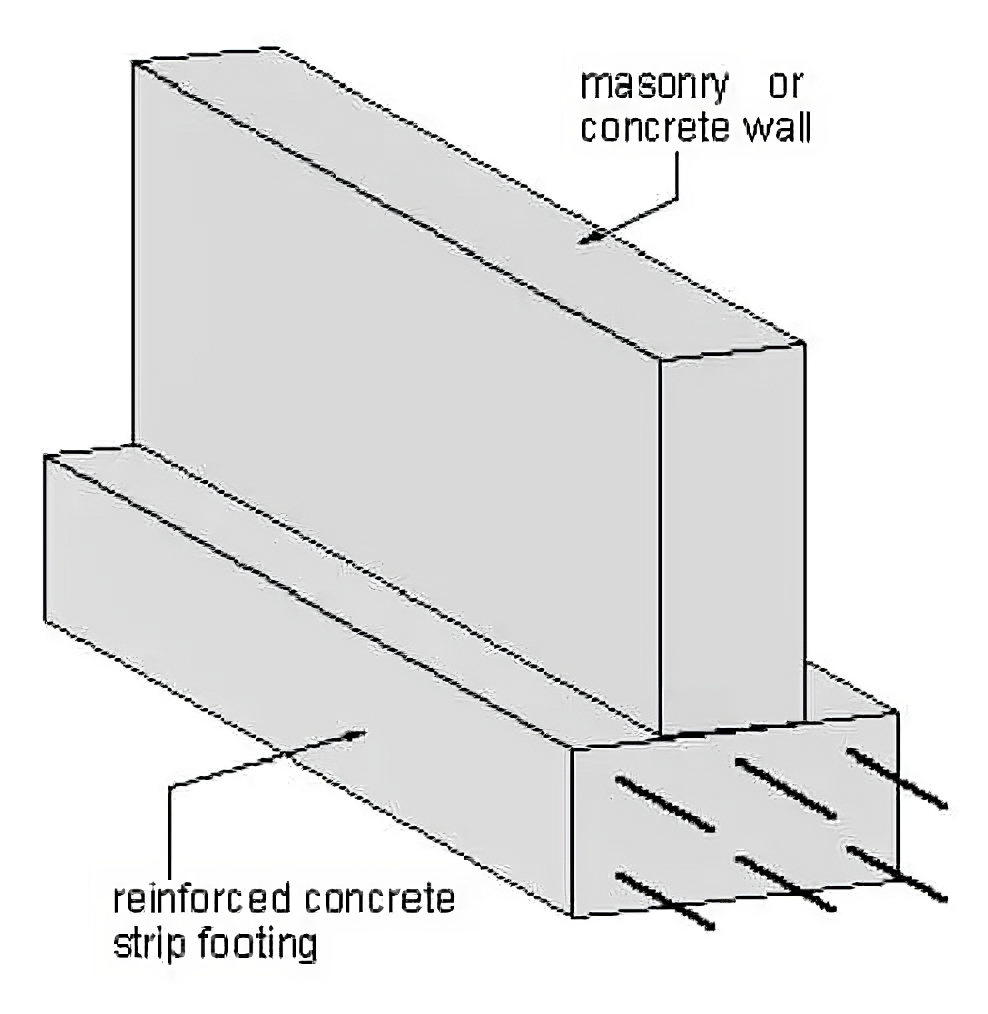
2. Isolated Footing:
Isolated footings, also known as pad footings, are designed to support single columns. These are usually square, rectangular, or circular pads that provide stability for light to moderate loads.

3. Combined Footing:
When steel columns are spaced closely, combined footings serve as an efficient foundation. They prevent overlapping of individual footings and ensure stability under heavy loads.
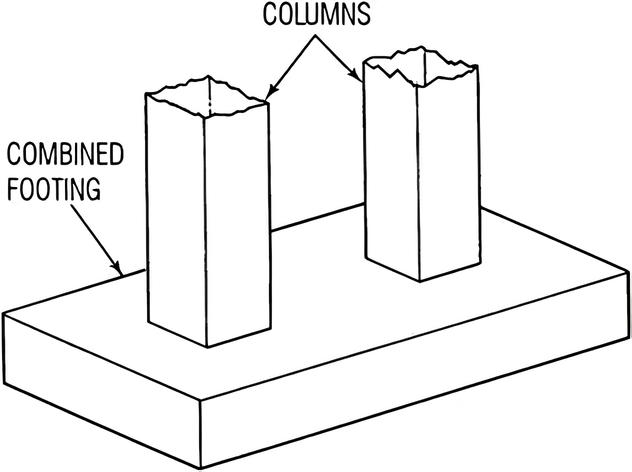
4. Strap Footing:
Strap footings connect isolated footings with a concrete beam. This strap beam transfers the load from a heavily loaded column to a less loaded column, balancing the pressure on the soil . This is particularly useful for unevenly spaced steel columns.
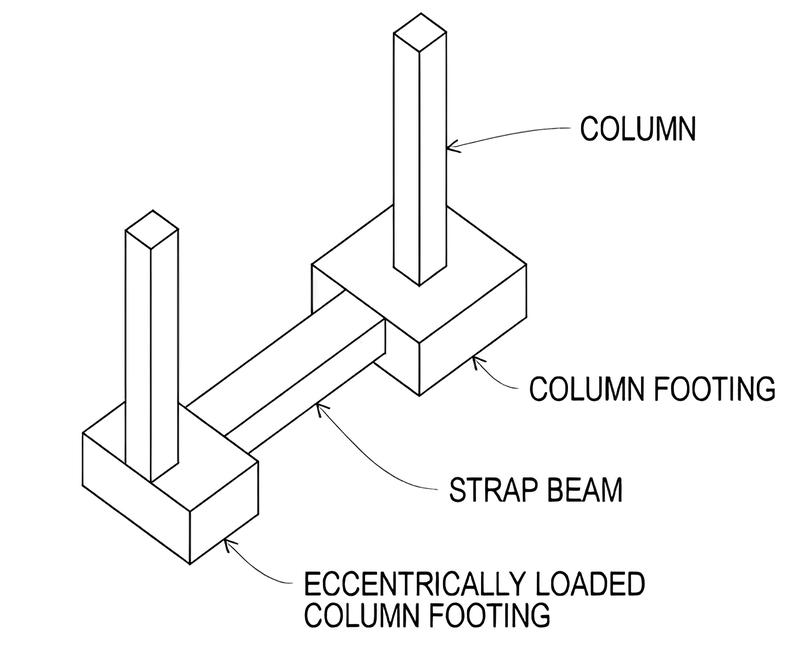
5. Stepped Footing:
Stepped footings are ideal for sloped sites or uneven terrain. The steps help in maintaining level support for columns and walls while minimizing excavation.
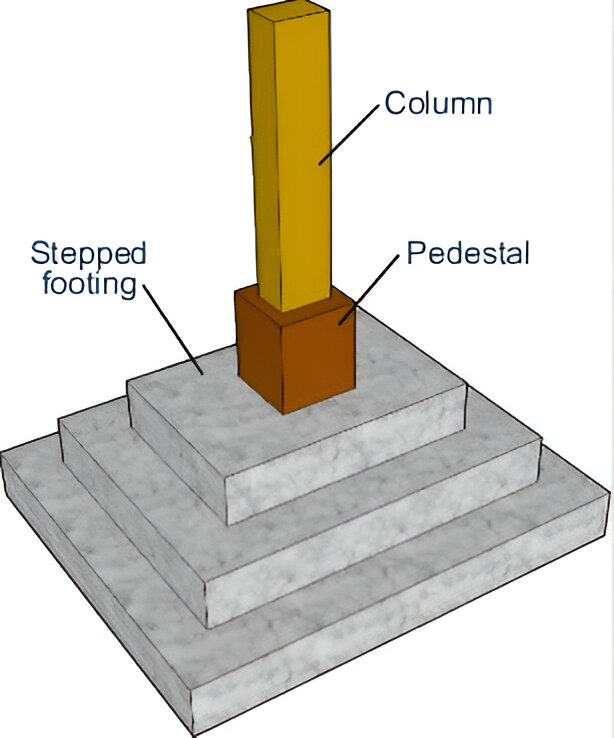
6. Raft Footings:
Raft footings also known as mat footings are large, thick concrete slabs that support the entire building footprint, distributing loads evenly across the foundation area. They are particularly useful in steel structures with high loads or poor soil conditions.
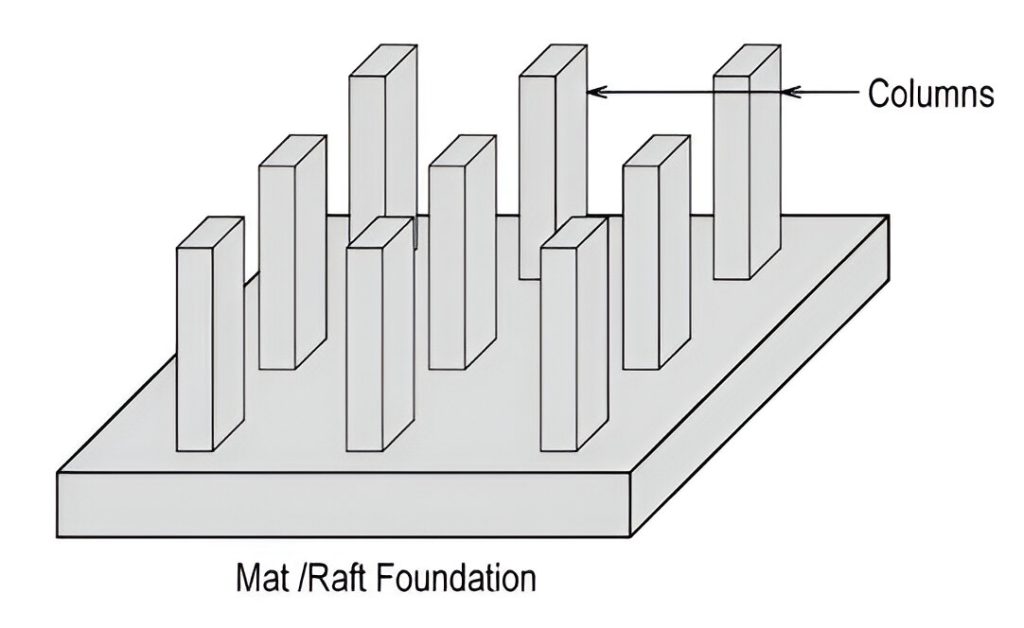
7. Pile Footings:
Pile footings are deep foundations used when surface soil cannot support the structure. Piles are driven deep into the ground to reach more stable soil layers or bedrock.
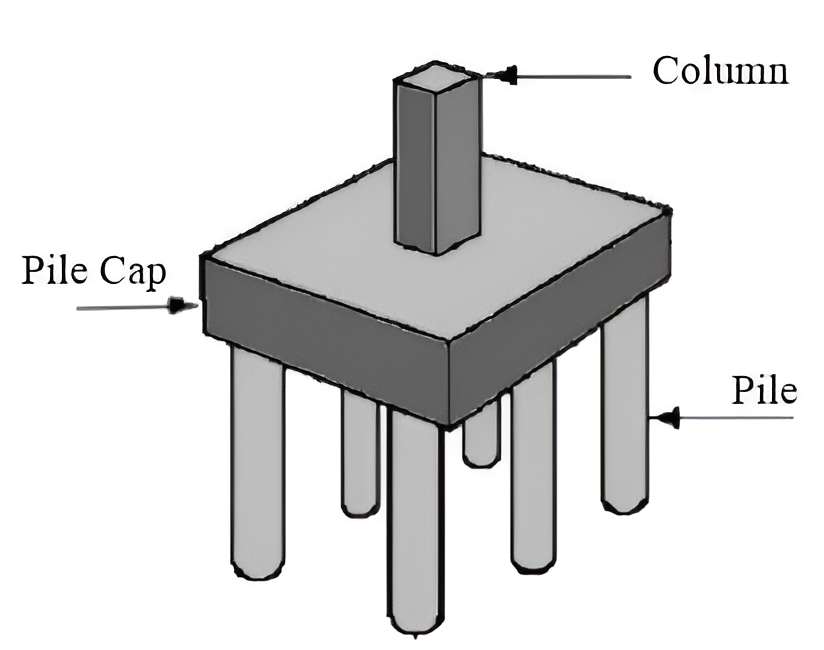
Factors for choosing the correct type of footing :
- Soil Condition: The bearing capacity and stability of the soil determine which footing is suitable.
- Load Requirements: The weight and distribution of the building’s load help decide the footing size and type.
- Building Type: The design and purpose of the structure influence the selection of footing.
- Space Availability: The available space for construction can necessitate certain footing types over others.
- Budget Constraints: Cost considerations can affect the choice of footing material and design.
- Environmental Factors: Local climate, water table level, and seismic activity are also important considerations.
Sources :
5 Types of footing – Best footing – Images – Uses [PDF] – Definecivil
Types of footing Used in Building Construction (7 Different Types) (constructionor.com)

Leave a Reply